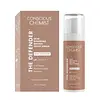What's inside
What's inside
 Key Ingredients
Key Ingredients

 Benefits
Benefits

 Concerns
Concerns

 Ingredients Side-by-side
Ingredients Side-by-side

Water
Skin ConditioningPropylene Glycol
HumectantNiacinamide
SmoothingCamellia Sinensis Leaf Extract
AntimicrobialSalicylic Acid
MaskingXylitylglucoside
HumectantAnhydroxylitol
HumectantXylitol
HumectantPiper Nigrum Seed Extract
RefreshingTriethanolamine
BufferingPhenoxyethanol
PreservativeEthylhexylglycerin
Skin ConditioningXanthan Gum
EmulsifyingPhyllanthus Emblica Fruit Extract
HumectantCapryloyl Glycine
CleansingSarcosine
Skin ConditioningCinnamomum Zeylanicum Bark Extract
AntimicrobialGlycerin
HumectantPalmaria Palmata Extract
Skin ProtectingEDTA
Rapeseed Sophorolipids
AntimicrobialWater, Propylene Glycol, Niacinamide, Camellia Sinensis Leaf Extract, Salicylic Acid, Xylitylglucoside, Anhydroxylitol, Xylitol, Piper Nigrum Seed Extract, Triethanolamine, Phenoxyethanol, Ethylhexylglycerin, Xanthan Gum, Phyllanthus Emblica Fruit Extract, Capryloyl Glycine, Sarcosine, Cinnamomum Zeylanicum Bark Extract, Glycerin, Palmaria Palmata Extract, EDTA, Rapeseed Sophorolipids
Water
Skin ConditioningCentella Asiatica Extract
CleansingGlycerin
HumectantLecithin
EmollientHelianthus Annuus Seed Oil
EmollientAlcohol
AntimicrobialTocopherol
AntioxidantTrehalose
HumectantPhenoxyethanol
PreservativeCarbomer
Emulsion StabilisingRetinol
Skin ConditioningPolysorbate 20
EmulsifyingBHA
AntioxidantBHT
AntioxidantPanthenol
Skin ConditioningSodium PCA
HumectantSodium Lactate
BufferingArginine
MaskingAspartic Acid
MaskingPCA
HumectantGlycine
BufferingAlanine
MaskingSerine
MaskingValine
MaskingProline
Skin ConditioningThreonine
Isoleucine
Skin ConditioningHistidine
HumectantPhenylalanine
MaskingAcetyl Hexapeptide-8
HumectantCopper Tripeptide-1
Skin ConditioningPalmitoyl Pentapeptide-4
Skin ConditioningTripeptide-1
Skin ConditioningHexapeptide-9
Skin ConditioningPalmitoyl Tripeptide-1
Skin ConditioningPolyglyceryl-10 Laurate
Skin ConditioningButylene Glycol
Humectant1,2-Hexanediol
Skin ConditioningPrunus Armeniaca Bud Extract
Skin ConditioningSodium Hyaluronate
HumectantSaccharide Isomerate
HumectantCitric Acid
BufferingSodium Citrate
BufferingWater, Centella Asiatica Extract, Glycerin, Lecithin, Helianthus Annuus Seed Oil, Alcohol, Tocopherol, Trehalose, Phenoxyethanol, Carbomer, Retinol, Polysorbate 20, BHA, BHT, Panthenol, Sodium PCA, Sodium Lactate, Arginine, Aspartic Acid, PCA, Glycine, Alanine, Serine, Valine, Proline, Threonine, Isoleucine, Histidine, Phenylalanine, Acetyl Hexapeptide-8, Copper Tripeptide-1, Palmitoyl Pentapeptide-4, Tripeptide-1, Hexapeptide-9, Palmitoyl Tripeptide-1, Polyglyceryl-10 Laurate, Butylene Glycol, 1,2-Hexanediol, Prunus Armeniaca Bud Extract, Sodium Hyaluronate, Saccharide Isomerate, Citric Acid, Sodium Citrate
Ingredients Explained
These ingredients are found in both products.
Ingredients higher up in an ingredient list are typically present in a larger amount.
Glycerin is already naturally found in your skin. It helps moisturize and protect your skin.
A study from 2016 found glycerin to be more effective as a humectant than AHAs and hyaluronic acid.
As a humectant, it helps the skin stay hydrated by pulling moisture to your skin. The low molecular weight of glycerin allows it to pull moisture into the deeper layers of your skin.
Hydrated skin improves your skin barrier; Your skin barrier helps protect against irritants and bacteria.
Glycerin has also been found to have antimicrobial and antiviral properties. Due to these properties, glycerin is often used in wound and burn treatments.
In cosmetics, glycerin is usually derived from plants such as soybean or palm. However, it can also be sourced from animals, such as tallow or animal fat.
This ingredient is organic, colorless, odorless, and non-toxic.
Glycerin is the name for this ingredient in American English. British English uses Glycerol/Glycerine.
Learn more about GlycerinPhenoxyethanol is a preservative that has germicide, antimicrobial, and aromatic properties. Studies show that phenoxyethanol can prevent microbial growth. By itself, it has a scent that is similar to that of a rose.
It's often used in formulations along with Caprylyl Glycol to preserve the shelf life of products.
Water. It's the most common cosmetic ingredient of all. You'll usually see it at the top of ingredient lists, meaning that it makes up the largest part of the product.
So why is it so popular? Water most often acts as a solvent - this means that it helps dissolve other ingredients into the formulation.
You'll also recognize water as that liquid we all need to stay alive. If you see this, drink a glass of water. Stay hydrated!
Learn more about Water